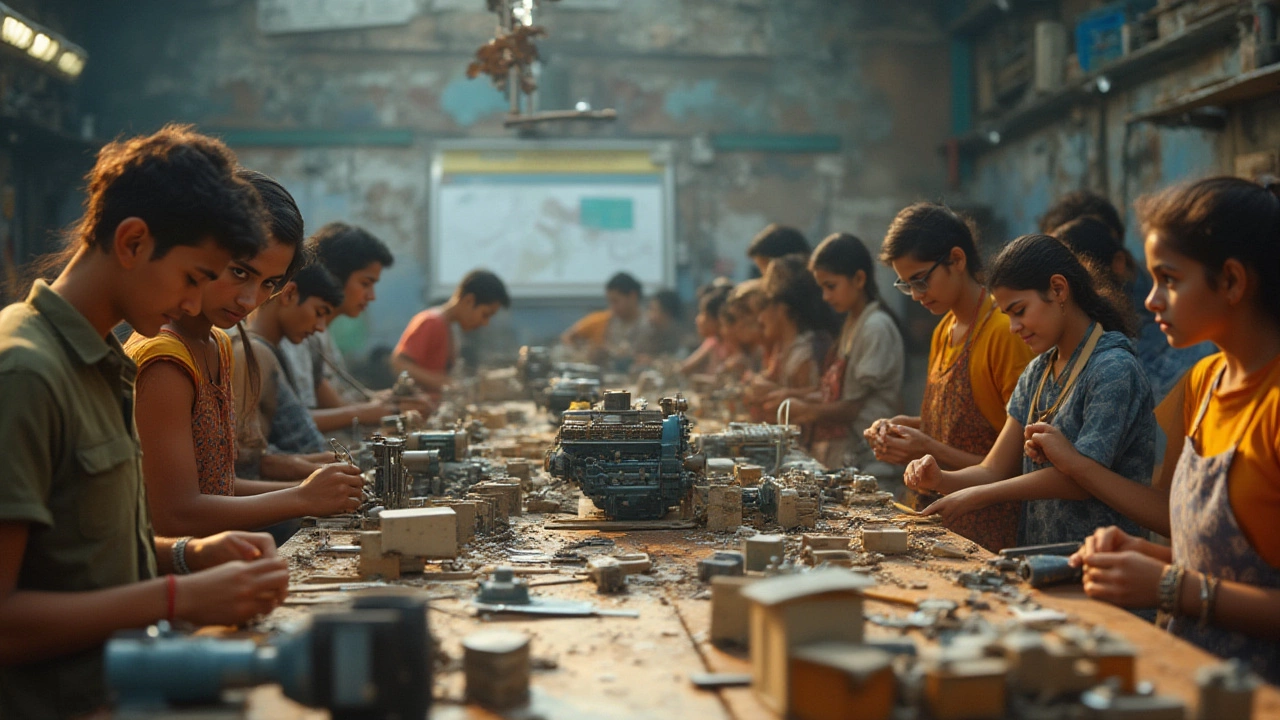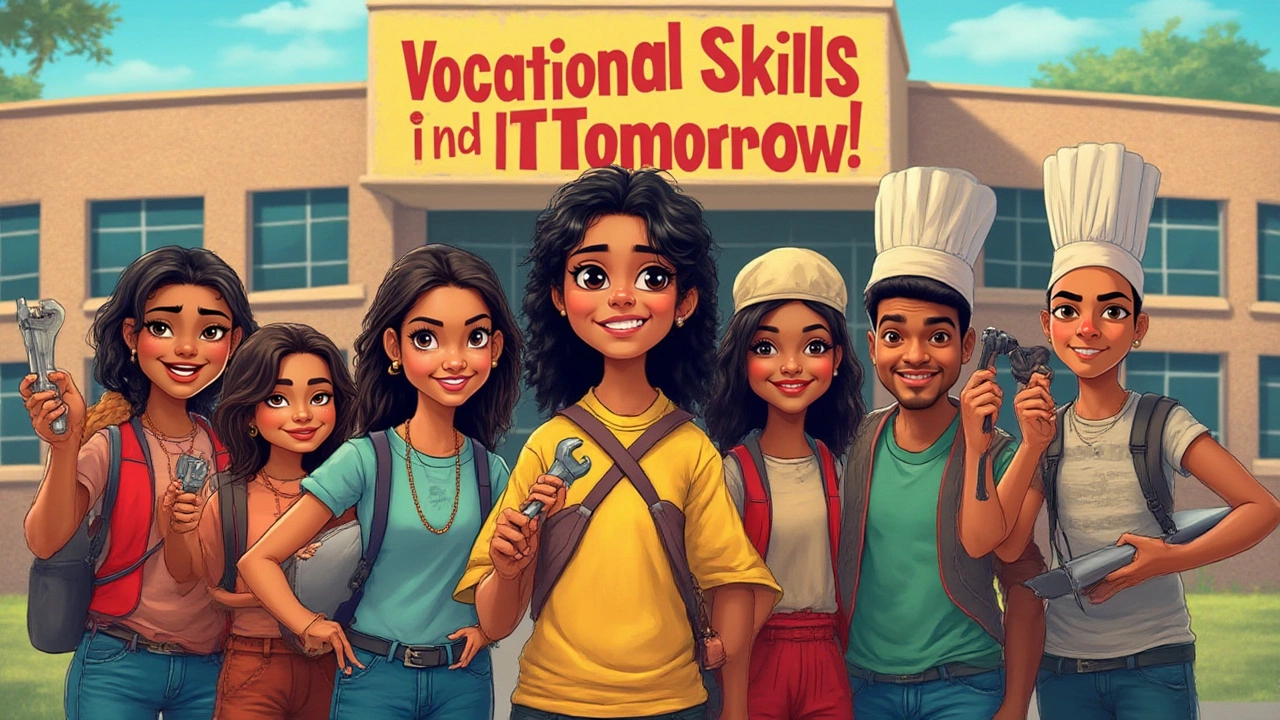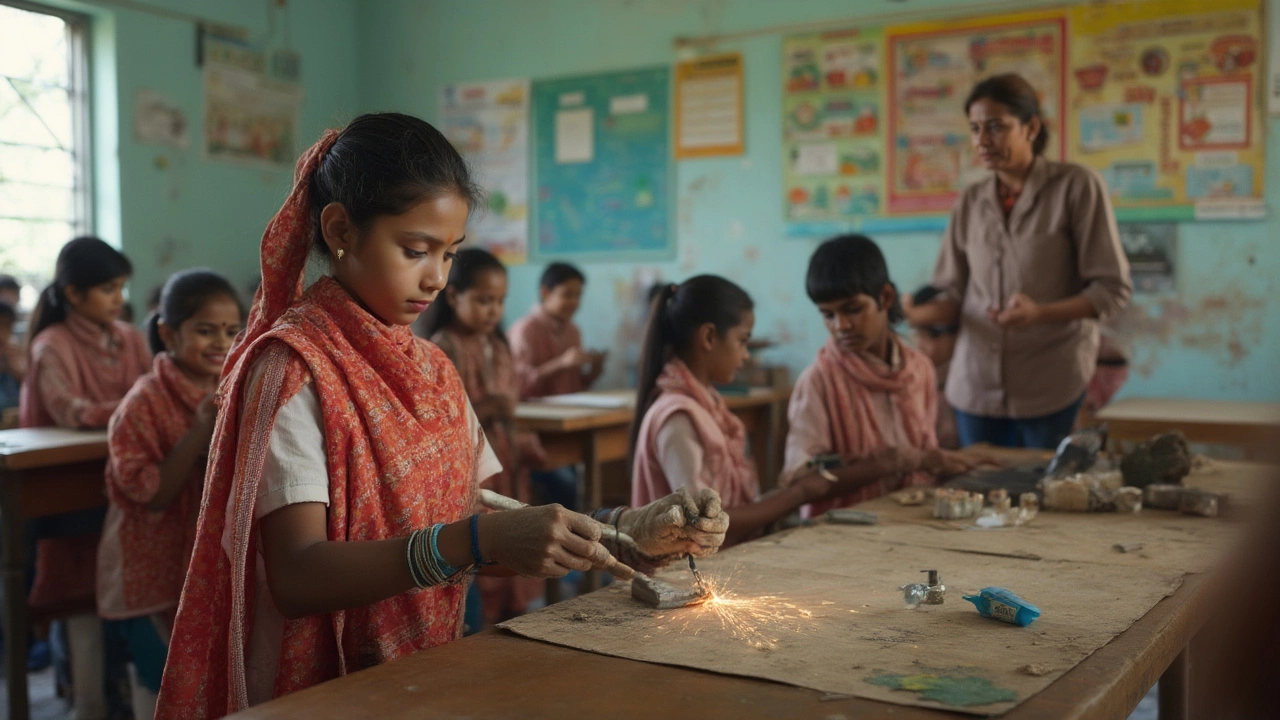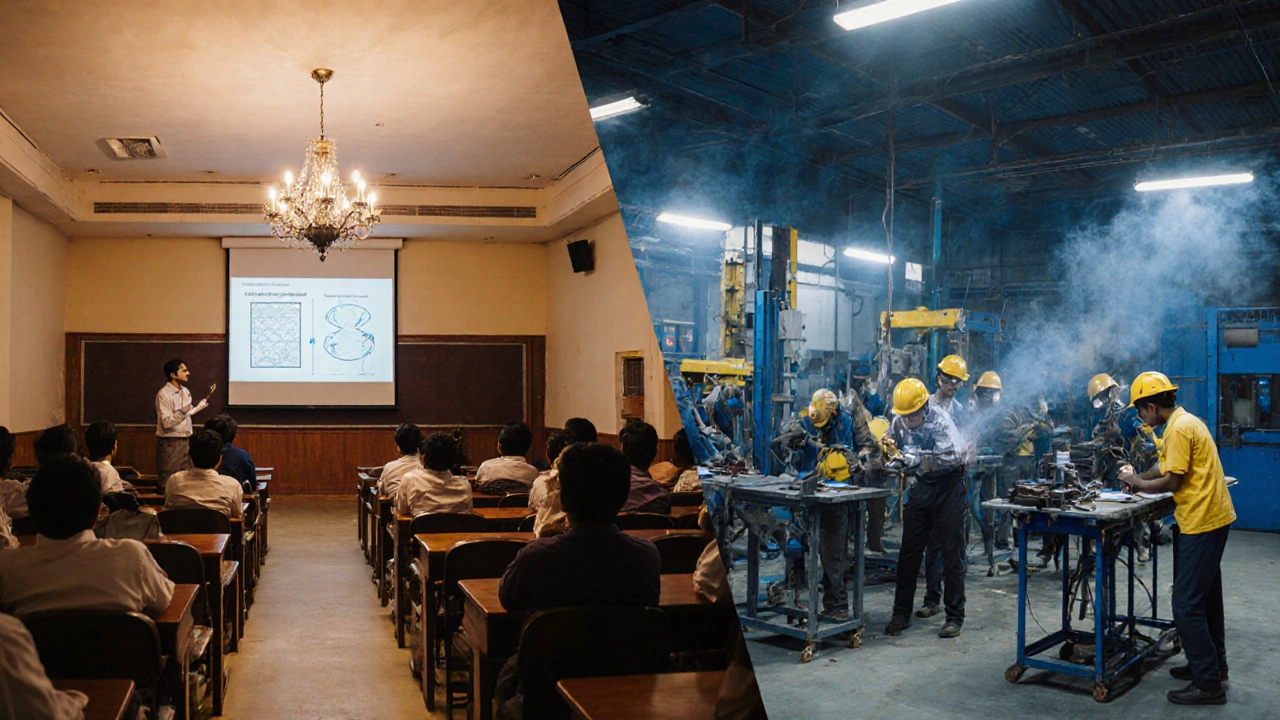Imagine a classroom where students aren’t just reading about engines, but actually taking one apart. Or think about a lesson where, instead of writing essays, the assignment is to create a marketing campaign for a real local business. This isn’t some utopian fantasy. It’s happening every day in schools that offer vocational education. Yet, so many people still have no idea what "vocational" actually means when it comes to schooling. The word can sound stiff or outdated—maybe you picture blacksmiths or auto shops from old movies. But vocational learning is alive, kicking, and more relevant than ever.
What Vocational Means in a School Setting
When someone talks about "vocational" in school, they’re not talking about math textbooks or Shakespeare plays. They’re talking about hands-on learning that’s all about preparing students to jump straight into a trade or specific career. Unlike traditional academic routes, which focus on general knowledge, vocational education sticks close to skills you can actually use right after graduation. Think electricians, chefs, lab technicians, machinists, graphic designers, or even digital marketers—yeah, it’s not all just blue-collar anymore.
Instead of sitting in a desk for hours memorizing facts, students learn by doing. A big chunk of their day might happen in workshops, kitchens, or on computers. They use the tools of the trade right there in school. Studies from the Association for Career and Technical Education in 2024 found that nearly 94% of vocational school graduates found work within six months after finishing their programs. That’s not a fluke; these schools focus on real-world demand.
Vocational schools—sometimes called career and technical education (CTE) centers—don’t replace high school. Many are part of the regular school system, sitting side by side with core subjects like English and history. In some schools, you might take regular classes in the morning and switch to a vocation-focused class in the afternoon. Others, especially stand-alone technical high schools, have dedicated paths for mechanics, beauticians, culinary students, or healthcare workers. The options are growing, not shrinking; in 2025, the US had over 7,200 approved vocational and technical programs in high schools, according to the U.S. Department of Education.
Alright, here’s where it gets interesting. Vocational education isn’t a second-rate option for those who “can’t” do academic work. This stereotype is outdated and plain wrong. Harvard’s 2023 report on evolving career trends shows that demand for skilled tradespeople is outstripping academic-degree jobs in some industries. Plus, salaries in fields like plumbing, IT support, and medical technology often beat bachelor’s degree entry salaries by thousands of dollars.
So, to keep it simple: "Vocational" in school means teaching practical skills for real jobs. It’s for anyone who wants a head start into a respected, well-paying career—no side-eye needed.

Types of Vocational Programs and What You Learn
Not all vocational programs look the same. Some are intensely hands-on, like woodworking, welding, or auto repair. Others are more about applied science, like pharmacy tech or coding. Let’s break it down.
There’s usually two broad kinds of programs:
- Trade and Industrial Programs: This is what most people think of first—carpentry, automotive technology, HVAC (heating, ventilation, air conditioning), and cosmetology. Students spend hours mastering tools or equipment. For example, in a modern auto tech class, students use diagnostic computers alongside wrenches—cars have changed, and so have these classes.
- Service and Technology Programs:
This is where you’ll find healthcare assisting, culinary arts, early childhood education, business management, or even cybersecurity training. They’re less about grease and more about precision, teamwork, or brainpower. A kid in a culinary class might graduate ready for an entry chef position—knife work and all. Medical assisting students practice with simulated mannequins before real patients.
Here’s a cool fact: some schools even offer dual enrollment, meaning you can earn both high school credits and industry-recognized certificates (like CompTIA for computer techs, or ServSafe for budding chefs) all before age 18. That’s like finishing high school with an extra badge on your resume.
Programs make heavy use of real-world settings. Have you heard of "school-based enterprises"? That’s when a student-run business—like a bakery, auto shop, or hair salon—operates within the school as a legit business. Students learn customer service, money handling, and teamwork, all on school time. According to the National Center for College and Career Transitions, over 45% of CTE high schools in 2024 had at least one live enterprise open to the public.
Beyond hands-on practice, many vocational schools bring in industry partners for internships, job shadows, or mentorship. Instead of just reading about a job, students get to go out and do it. This isn’t just busywork or free labor; employers often hire right out of these programs. I’ve met students who landed their first real job—complete with benefits—before their academic friends even picked a college major.
The way schools teach has changed too. Now, there’s a big push for “stackable credentials.” That means if you start with a welding certificate, you can build on it later for higher pay or more responsibility—maybe add advanced robotics or safety engineering. You don’t get boxed in, and there’s always more room to grow.
Many parents wonder if vocational paths cut off the college route. Not really. Tons of students use vocational credits to save money on college prerequisites or even transfer after a couple of years in the workforce. In some states, there are partnerships where completing a CTE program guarantees entry into certain technical colleges. So, the doors actually open wider, not narrower.
Want a tip for choosing the right program? Visit the classrooms. Ask to talk to students, not just counselors. If you get a spark watching someone fix a robot or decorate a cake, that program could be a perfect fit. Real passion wins every time.

Why Vocational Education Matters Today
The job market has shifted fast in the past decade. Forget the idea that a four-year college is the only ticket to a good life. As of 2025, jobs in technical fields are growing two times faster than traditional office work, according to Burning Glass Institute’s jobs report from March 2025. Employers are desperate for young people who can fill the skills gap, whether that’s fixing an electric vehicle or coding security for a smart fridge.
Here’s something most guidance counselors won’t tell you: student loan debt is lower for graduates from vocational programs. The U.S. Federal Reserve’s report in April 2025 showed CTE graduates have, on average, debt levels about half of those with four-year liberal arts degrees. Not only are vocational students graduating quicker (many in under two years), but they’re also stepping into jobs that need them right now—not after months of job-hunting.
Vocational routes don’t mean being stuck in one job forever. The skills you learn are often transferable. For instance, someone who starts as a welder can, with more certifications, move into industrial design or teaching. Cosmetologists who fall in love with business might open their own shops. Many end up with more freedom, not less.
But there’s more at stake than just money or job security. Students who succeed in vocational settings often report higher school engagement, less absenteeism, and a stronger sense of community. There’s something satisfying about starting a project and seeing the real, tangible result at the end—something many academic classes can only hint at. A recent Gallup-CTE engagement survey found 73% of CTE students felt "excited and motivated" about going to school compared to only 44% of traditional-only students.
If you’re a student or parent thinking about the future, don’t sleep on vocational education. Whether you’re dreaming of running your own bakery, building tomorrow’s green skyscrapers, or writing code for wearable gadgets, vocational programs are built to get you there faster and smarter. And as the skilled labor gap keeps growing, those hands-on skills only get more valuable as time goes on.
To wrap things up: vocational means learning by doing, building real skills, and starting a career right out of school—no extra years or crushing debt required. It’s not a backup plan, it’s a smart plan. Whether you want to jump into work, stack up extra credentials, or even head to college later, schools with vocational programs are opening all the right doors. The future needs people who know how to do things, not just talk about them. Isn’t it time we give hands-on learning the respect it deserves?

